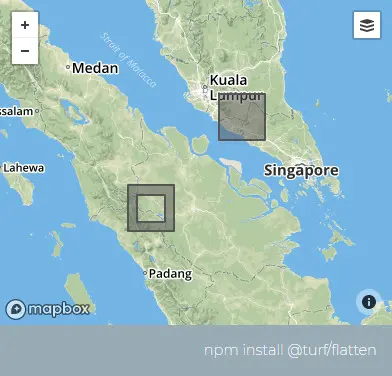# 减少嵌套层级(flatten)
> npm install @turf/flatten
Flattens any GeoJSON to a FeatureCollection inspired by geojson-flatten. 接收一个 type 为 MultiPoint、MultiLineString、MultiPolygon的要素,返回 type 为 Point、LineString、Polygon 的要素集(FeatureCollection)
参数
| 参数 | 类型 | 描述 |
|---|---|---|
| geojson | GeoJSON | Multi*的要素 |
返回
FeatureCollection - all Multi-Geometries are flattened into single Features
FeatureCollection - 摊平的要素集
示例
var multiGeometry = turf.multiPolygon([
[
[
[102.0, 2.0],
[103.0, 2.0],
[103.0, 3.0],
[102.0, 3.0],
[102.0, 2.0]
]
],
[
[
[100.0, 0.0],
[101.0, 0.0],
[101.0, 1.0],
[100.0, 1.0],
[100.0, 0.0]
],
[
[100.2, 0.2],
[100.8, 0.2],
[100.8, 0.8],
[100.2, 0.8],
[100.2, 0.2]
]
]
]); // type 为 MultiPolygon
var flatten = turf.flatten(multiGeometry); // type 为 Polygon 的多个要素

基础用法
Copy